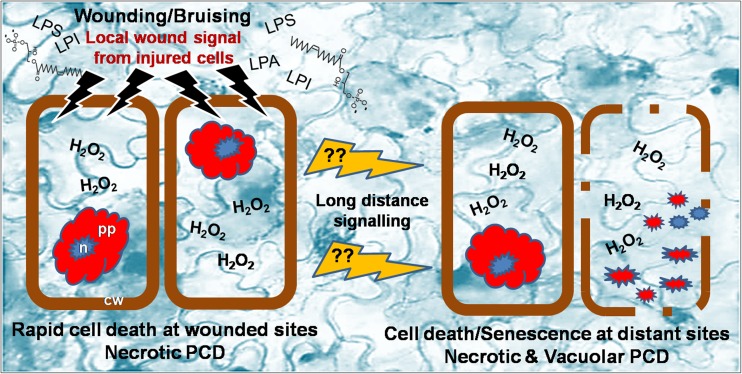Fig. 10.
Schematic illustration of PCD involvement in the wound response in fresh-cut lettuce. Wounding (at the cut edge or bruised sites) involves the production of lysophospholipids (such as LPA, lysophosphatidic acid; LPS; lysophosphatidylserine; LPI, lysophosphatidylinositol) and causes rapid browning confined to the area surrounding the injured tissue. Browning is associated with massive cell death, H2O2 and general ROS accumulation, electrolyte leakage and chlorophyll loss. Dead cells mostly resemble necrotic PCD phenotype (shrunken protoplast). Dying cells generate signal molecules that travel over greater distances to cause ROS and cell death at distant sites; first in trichomes and subsequently in the connecting epidermal and mesophyll cells. In addition to necrotic PCD also vacuolar PCD (leaving empty cell corpses behind) and the complete disappearance of cells are observed. cw Cell wall, n Nucleus, pp. Protoplast

